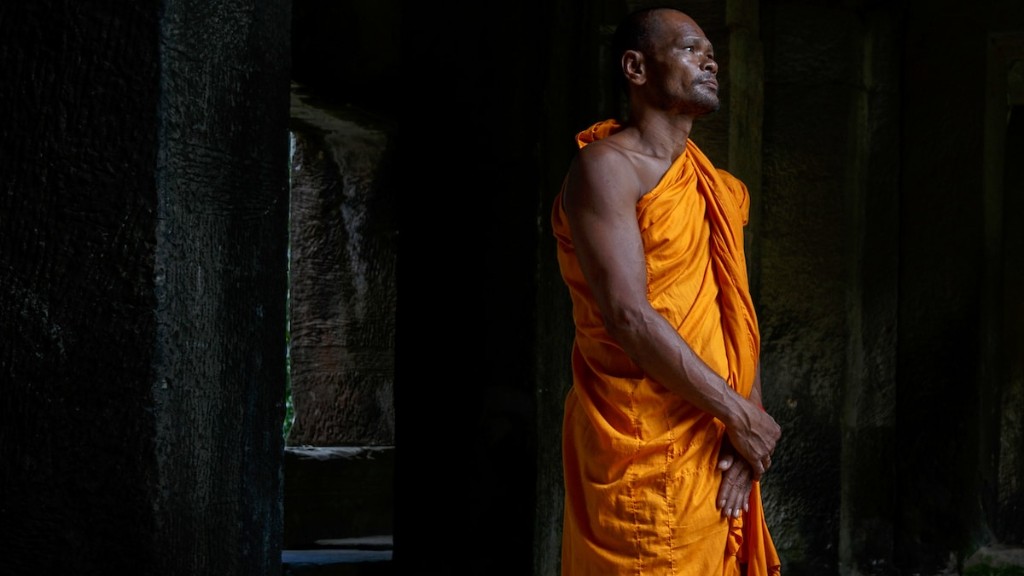What Is The Sacred Text Of Hinduism?
Hinduism is one of the oldest religions on Earth. It is said to have originated from the Indus Valley in India at least 4,000 years ago. Hinduism is based on a series of sacred texts, known collectively as shastras. The shastras are the foundation for the beliefs, practices, and philosophy of Hinduism and are often referred to as “the revealed knowledge”.
The four major shastras of Hinduism are the Vedas, the Upanishads, the Sutras, and the Bhagavad Gita. The Vedas are the oldest and most important of the four texts. They contain hymns, rituals, and sacred chants which were used in worship and meditation. It is believed that the Vedas were composed by ancient figures such as Rishis and Brahmanas.
The Upanishads are philosophical texts which focus on the search of truth and meaning. They explore the relationship between humanity and the divine. The Sutras deal mainly with law, politics, and social customs. They provide advice on how one should go about living in accordance with the teachings of Hinduism. Finally, the Bhagavad Gita is one of the most revered and popular sacred texts of Hinduism. It is an epic poem about a dialogue between the god Krishna and the hero warrior Arjuna.
All of the sacred texts of Hinduism are seen as timeless works of divine wisdom. They are meant to be studied and contemplated on in order to gain greater insight into the divine and to understand the mystery of life. Many Hindus believe that the shastras hold the key to liberation and eternal bliss.
It is not easy to comprehend the full meaning of the shastras. They are written in a complex language and contain many allegorical passages which can be difficult to understand. In order to fully understand the Hindu sacred texts, it is necessary to invest time and effort into studying them. This is why Hinduism is seen as a living faith as opposed to a revealed one.
The shastras are seen as a sacred source of guidance and truth which are essential to understanding and practicing Hinduism. They are said to provide the wisdom required to live a meaningful and virtuous life in harmony with the divine.
Vedas
The Vedas are the oldest and most important of the four major Hindu sacred texts. They are composed of hymns, rituals, and sacred chants which were used in worship and meditation. They also contain philosophical and cosmological teachings which are fundamental to Hinduism. The Vedas are believed to have been composed by ancient figures such as Rishis and Brahmanas.
The four Vedas are:
- Rigveda
- Yajurveda
- Samaveda
- Atharvaveda
The Rigveda is the oldest and most important of the Vedas. It contains more than one thousand hymns which date back to 1500 BCE. It is believed that the Rigveda was composed by the ancient Vedic culture in India. It is also seen as a source of some of the oldest spiritual teachings on Earth.
The Yajurveda is the second of the four Vedas and consists of sacrificial liturgy or ‘yajnas’. The yajnas are meant to be performed by priests in order to obtain power from the gods. The Yajurveda has long been a source of spiritual knowledge and wisdom for Hindus.
The Samaveda is the third Veda which is focused on chants to be used in ritual worship. It is said that the Samaveda is a source of great knowledge about music and chant and it is believed to have influenced many musical traditions throughout history.
The fourth Veda is the Atharvaveda, which is mostly composed of spells, charms, and incantations. It is seen as the means of accessing occult and supernatural powers.
The Vedas are seen as timeless works of divine wisdom which are essential to practicing Hinduism. They are seen as a source of great spiritual knowledge and insight on the nature of reality.
Upanishads
The Upanishads are philosophical texts which are believed to have been composed between 800 BCE and 600 BCE. They are believed to be among the oldest spiritual texts on Earth. They explore the relationship between humanity and the divine, as well as the nature of reality.
The Upanishads contain a number of teachings and stories which are meant to provide insight into the nature of reality. They explore metaphysical and philosophical concepts such as karma, reincarnation, and emancipation. Many of the teachings in the Upanishads are still relevant today and are seen as an essential source of divine knowledge.
The Upanishads are divided into two categories. The Sutra Upanishads are shorter texts which provide an introduction to the teachings of the Upanishads. The Poetic Upanishads are longer and are composed in the form of poems and stories.
The Upanishads are not just philosophical texts, they are also seen as a source of spiritual guidance. They provide advice on how to live a meaningful and virtuous life in accordance with the teachings of Hinduism.
Sutras
The Sutras are the third of the four major Hindu sacred texts. They are mostly composed of laws, regulations, and social customs. They provide advice on how one should go about living a life in accordance with the Vedic teachings.
The Manusmriti is the most important of the Sutras. It is composed of several books which deal with a number of topics such as Dharma, marriage, inheritance, and government. The Manusmriti is said to be a source of great knowledge on the laws and customs of ancient India.
The other Sutras include:
- Yajnavalkya Smriti
- Narada Smriti
- Vasistha Smriti
- Gautama Smriti
The Sutras are seen as a source of wisdom on Indian law and customs. They provide insight into the legal system of ancient India and are seen as essential for understanding the social and political customs of the time.
Bhagavad Gita
The Bhagavad Gita is one of the most revered and popular texts of Hinduism. It is an epic poem about a dialogue between the god Krishna and the hero warrior Arjuna. The dialogue is said to contain one of the deepest truths of Hinduism, which is that of the unity of all existence.
The Bhagavad Gita is composed of 18 chapters and is said to be an abridged version of the Vedas. It is seen as a source of great spiritual knowledge and is believed to contain the essence of the Vedic teachings. Many Hindus believe that the Bhagavad Gita holds the key to liberation and eternal bliss.
The Bhagavad Gita is a timeless work of divine wisdom which is essential for understanding and practicing Hinduism. It is seen as a source of spiritual knowledge and insight on the nature of reality and the divine.
Conclusion
The four major sacred texts of Hinduism are the Vedas, the Upanishads, the Sutras, and the Bhagavad Gita. They are seen as timeless works of divine wisdom which provide insight into the nature of reality and the divine. All of these texts are believed to be essential for understanding and practicing Hinduism.
The Vedas are the oldest and most important of the four texts. They contain hymns, rituals, and sacred chants which were used in worship and meditation. The Upanishads are philosophical texts which explore the relationship between humanity and the divine, as well as the nature of reality. The Sutras are composed of laws, regulations, and social customs which provide guidance on how to live according to the Vedic teachings. Finally, the Bhagavad Gita is an epic poem which is said to contain one of the deepest truths of Hinduism.


